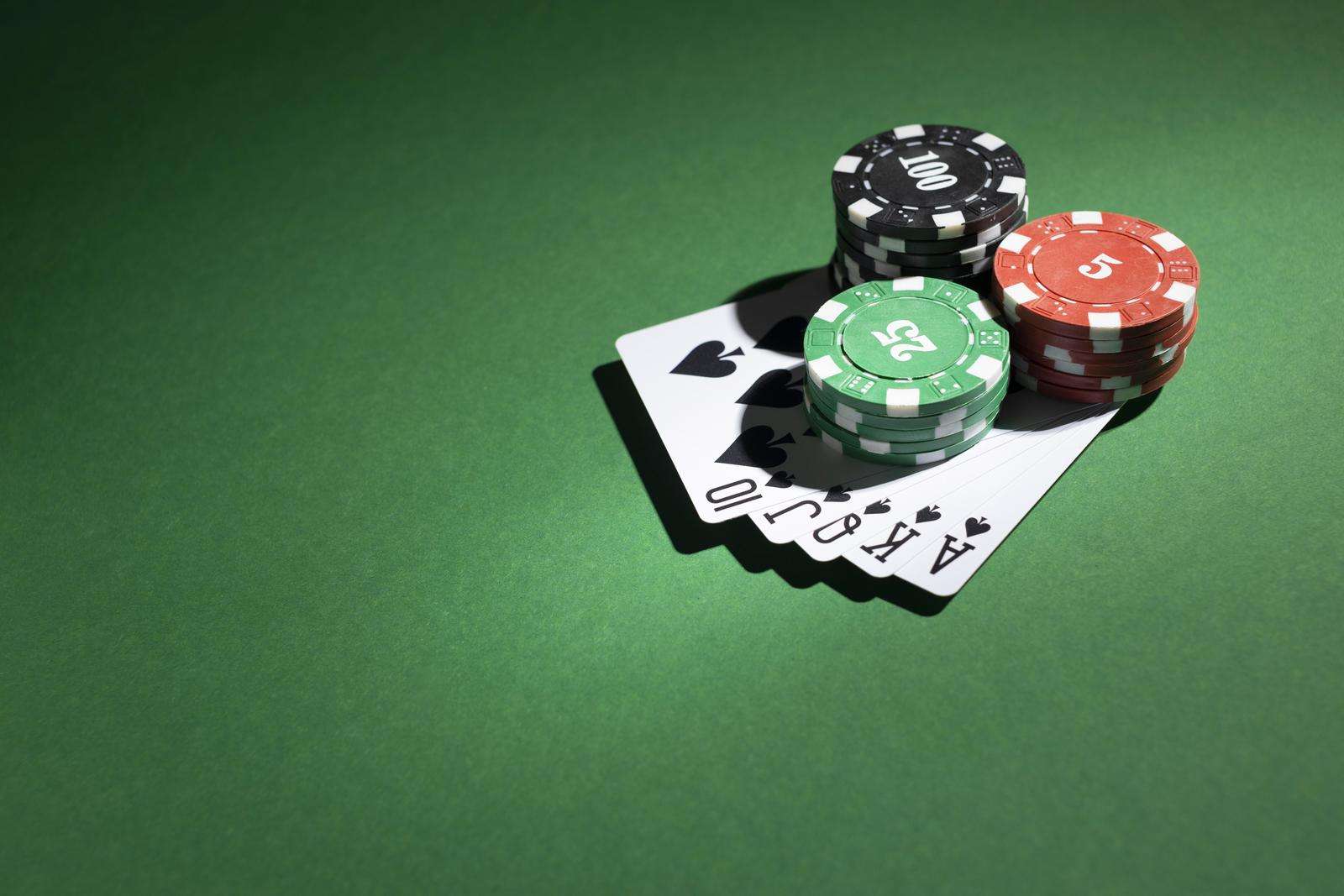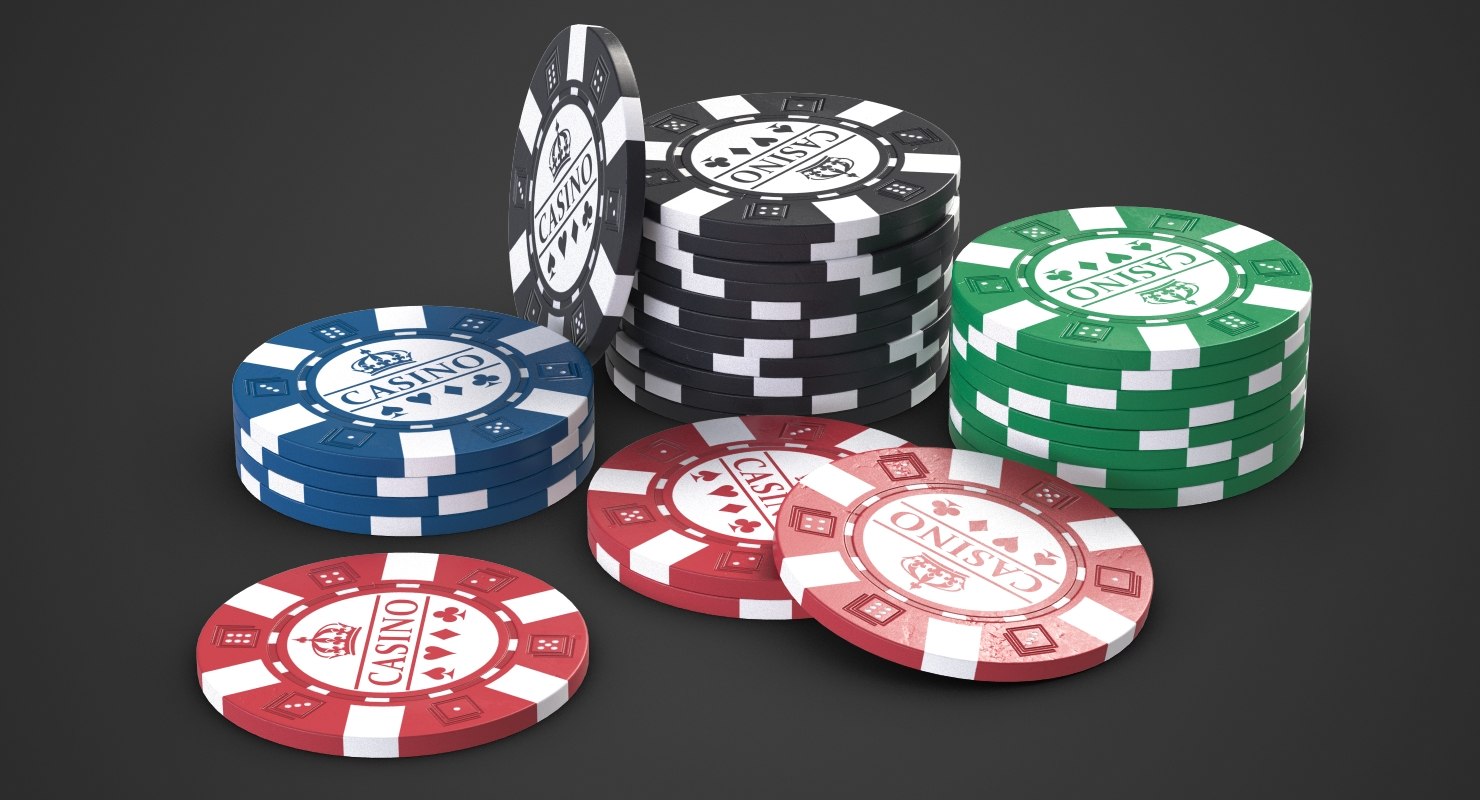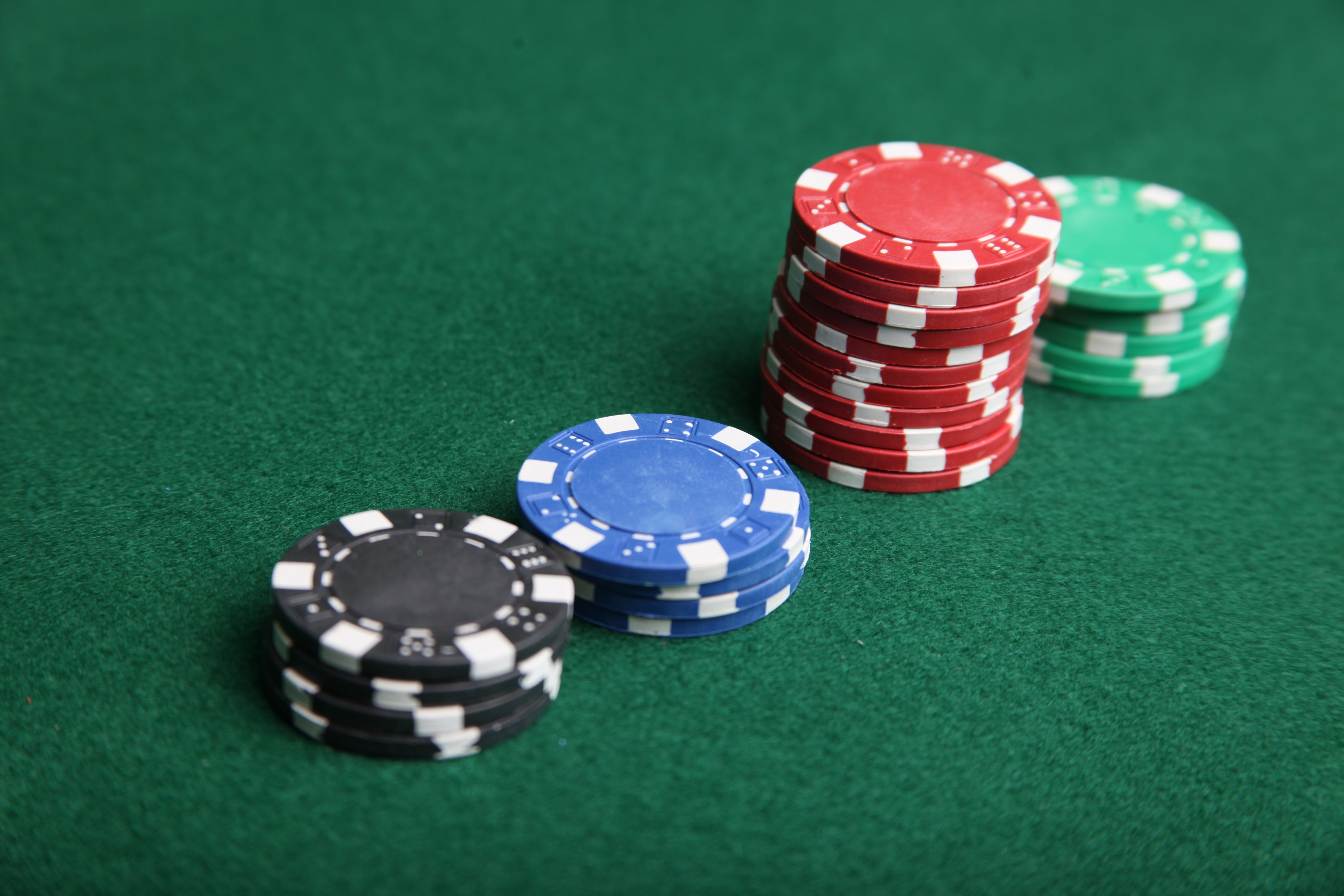
What Happened To Fresh Deck Poker
Introduction What Happened To Fresh Deck Poker: Once a vibrant and engaging virtual poker haven,…

How To Deal Poker Chips: In the intricate world of poker, where skill, strategy, and chance intersect, the art of dealing poker chips holds paramount importance. The process of distributing chips is not merely a mechanical task but a fundamental aspect that establishes the foundation for engaging gameplay and strategic decision-making. Whether in a casual home game or a high-stakes casino setting, mastering the technique of dealing poker chips is essential for maintaining order, fairness, and the integrity of the game.
Dealing poker chips effectively entails more than the physical act of distributing tokens of varying values. It involves clear communication, meticulous organization, and a deep understanding of the game’s dynamics. The way chips are dealt sets the stage for bets, raises, and the ebb and flow of poker strategy.
As players gather around the green felt table, the process of dealing chips begins. Each chip has its denomination, and the way they are handled reflects the complex ecosystem of poker gameplay. The manner in which chips are placed, stacked, and moved influences the rhythm of the game and shapes the psychology of the players involved.
In this exploration, we delve into the art and technique of dealing poker chips. From distributing starting stacks at the beginning of a game to handling bets and raises throughout each hand, the process is a symphony of calculated moves, clear communication, and precision. By unraveling the layers of this intricate practice, we unveil the foundational role it plays in orchestrating the captivating dance of poker, where chips become the currency of strategy and the canvas on which fortunes are won and lost.

Four to five players have a total of 400 or 500 chips. Five to six players have 500 or 600 chips. Six to eight players have 600 to 800 chips. More than 10 players start with 1000 chips and add 100 chips for each player.
The number of chips dealt in a game of poker can vary based on several factors, including the specific variant of poker being played, the stakes of the game, and the structure of the tournament or cash game. In most cases, players are initially dealt a certain number of chips to start the game, and the total number of chips in play can fluctuate throughout the course of the game.
For example, in a Texas Hold’em poker tournament, players often receive a starting stack of around 1,500 to 3,000 chips. This starting stack can provide players with a reasonable amount of chips to begin the game and make strategic decisions without immediately facing blinds that are too high. As the game progresses, the blinds increase at set intervals, which can impact the value of chips and the pace of play.
In cash games, the number of chips can be more fluid, as players can buy in for a specific amount and then add more chips as needed. This allows for a more flexible approach to chip distribution based on the preferences of the players involved.
Ultimately, the number of chips dealt in poker is determined by the game’s structure and the balance between providing players with enough chips to make meaningful decisions and maintaining the competitiveness of the game. Whether it’s a tournament or a cash game, finding the right balance ensures an engaging and strategic poker experience for all players involved.
When hosting a game of poker, each player should get a starting stack of enough chips to cover a 50 chip initial big blind minimum and a 100 chip big blind maximum. A standard poker chip set typically contains 300 chips – 100 pieces for white and 50 pieces for every other color.
The number of poker chips allocated per person can vary depending on the type of game being played and the preferences of the players involved. In most cases, the goal is to provide each player with a sufficient number of chips to start the game while maintaining a balanced and competitive environment.
In a standard poker tournament, players are often given a starting stack of chips. The size of this stack can range from 1,500 to 3,000 chips or more, depending on the tournament’s structure. This starting stack is designed to give players enough chips to make meaningful decisions without being immediately pressured by high blinds.
For cash games, the chip distribution can be more flexible. Players typically buy in for a specific amount, and the chips they receive are based on the buy-in. Common buy-in amounts include 50 big blinds, 100 big blinds, or any other agreed-upon amount. This ensures that players have enough chips to play comfortably based on the stakes of the game.
It’s important to note that the number of chips per person can also depend on the total number of players at the table. The more players there are, the fewer chips each person might receive to ensure there is an appropriate amount of chips in play.
Ultimately, the goal of chip distribution is to create an enjoyable and competitive poker experience. Whether it’s a tournament or a cash game, finding the right balance of chips per person contributes to the strategic and engaging nature of the game.
100 poker chips
Each tray holds 100 poker chips. Never worry about a horrific poker chip spill again with your covered poker chip tray. Transfer tables easily with our poker chip trays with lids. Chip trays with lids improve stackability.
The number of poker chips in a tray can vary based on the size and design of the tray, as well as the denomination of the chips being used. Poker chip trays are designed to hold and organize a specific number of chips, making it convenient for players to manage their stacks during a game.
A standard poker chip tray typically holds around 100 chips per row, with each tray having multiple rows. This means that a common poker chip tray can hold anywhere from 300 to 500 chips, depending on the number of rows it contains. Some larger trays might accommodate even more chips.
The denomination of the chips also plays a role in determining how many chips fit in a tray. High-denomination chips are usually larger and might take up more space in the tray compared to lower-denomination chips.
Poker chip trays are an essential accessory in both home games and professional settings. They help keep the game organized and allow players to easily see and access their chip stacks. Additionally, chip trays are often designed to fit neatly on the table, making it convenient for players to keep track of their chips without disrupting the flow of the game.
You do not ever have to count or tell you opponent your stack size. You will have to move your hands/arms out of the way so that your opponent can see your stack size, though. It’s the dealer’s job to tell your opponent how many chips you have if your opponent asks.
Counting your chips is an essential practice in poker that serves strategic, practical, and etiquette-related purposes. Keeping track of your chip stack can significantly impact your decision-making and gameplay during a poker session.
Strategically, knowing the exact number of chips you possess allows you to make informed bets and raises based on the current pot size and your opponents’ stacks. This enables you to calculate pot odds and determine whether a particular bet is worth making.
Practically, counting your chips helps you avoid mistakes such as under-betting or over-betting, which can affect the flow of the game and your chances of winning. Accurate chip counts ensure that your bets are consistent and aligned with the table’s expectations.
Furthermore, chip counts contribute to the etiquette of the game. Displaying transparency by openly counting your chips demonstrates integrity and prevents misunderstandings. This practice fosters a fair and respectful atmosphere at the poker table, promoting a positive gaming experience for all players.
In tournaments, counting your chips is especially vital as blinds and antes increase over time. Understanding your chip stack relative to the increasing blinds allows you to make effective survival and strategic decisions.

Poker Chip Sizes
Most chips will be of “standard” size. This means that they are 39mm in diameter. If you’ve got your own poker set for home games, or if you’ve played poker in pretty much any casino, it’s likely that the chips you used were of this size.
Poker chips come in various sizes, and their dimensions can vary based on the manufacturer, style, and material used to create them. However, there are general industry standards that provide guidelines for the typical size of poker chips.
A standard poker chip used in casinos and home games is approximately 39mm (1.54 inches) in diameter. This size is considered the most common and comfortable for players to handle and stack during gameplay. The thickness of a poker chip can vary, but it’s usually around 3.3mm (0.13 inches).
Casino-grade poker chips are often made of clay or a composite material, which gives them a solid feel and weight. These chips are designed to replicate the tactile experience of playing in a professional casino setting.
In contrast, lower-cost plastic poker chips might be slightly smaller and lighter than the standard casino chips. These plastic chips are commonly used for casual home games or promotional purposes.
The design and aesthetic of poker chips can also influence their size. Custom-made chips or those with intricate artwork might have slightly different dimensions to accommodate the design elements.
Overall, the general size of a standard poker chip is around 39mm in diameter and 3.3mm in thickness. This size provides a comfortable and consistent feel for players, whether they’re participating in a casino game or a friendly home poker night.
Properly handling poker chips during a game is a crucial aspect of maintaining order, fairness, and the integrity of the game. Before the cards are even dealt, it’s essential to ensure you have an appropriate assortment of chips in various denominations. This allows you to accommodate a wide range of bets and actions throughout the game.
During betting and raising, verbal communication is as important as the physical placement of chips. Clearly announce your bet or raise to the table while simultaneously placing the chips in front of you. This dual approach ensures that everyone at the table is aware of the action and its associated value.
Neatness matters when placing chips. Stack similar-denomination chips tidily, allowing both the dealer and fellow players to easily assess the bet’s amount. For larger bets or when going all-in, use a smooth and deliberate motion to push your chips forward, avoiding the confusion of string betting.
It’s courteous to respect the dealer by directly handing them the chips for blinds, antes, or specific bets. This gesture maintains the flow of the game and prevents any miscommunication about the intended action.
Additionally, when placing chips in the pot, avoid the practice of “splashing the pot.” Instead, place your chips just in front of the pot to ensure that everyone can clearly see and verify the bet’s value.
By keeping your chip stacks organized and distinct, you facilitate the dealer’s job and enhance the transparency of the game. This collective adherence to proper chip-handling practices not only ensures smooth gameplay but also contributes to a respectful and enjoyable poker environment for all participants.
Effectively dealing poker chips to players is a multifaceted process that demands precision and fairness to create an optimal gaming environment. To begin, it’s crucial to have chip trays organized with a variety of denominations ready for distribution. As players take their seats, assign each a specific player identifier or seat number for easy reference throughout the game.
As chip distribution commences, ensure players receive their starting stacks in front of them. The distribution should reflect a balance of high and low-denomination chips, aligning with the game’s stakes. Maintaining accurate chip values is paramount – higher-denomination chips should cover lower-denomination bets, ensuring seamless gameplay.
During the distribution, clear communication is key. Audibly announce chip values as you hand them out, preventing misunderstandings. Vigilantly monitor the process to guarantee equitable chip distribution, thus preventing any unintentional disparities.
Maintaining organization is essential. Each player’s chip stack should remain distinct and easily distinguishable, minimizing confusion during betting and raises. Avoid mingling chip denominations to prevent ambiguity.
Address player questions promptly, clarifying any doubts about chip distribution, denominations, or game-specific rules. If the game is a tournament, succinctly explain the structure, blind increments, and any peculiar chip guidelines, fostering a transparent gaming experience.
As the chips are distributed and players’ stacks are established, the stage is set for an exciting poker game. By meticulously following these steps, dealers not only facilitate the gameplay process but also contribute to the overall enjoyment, fairness, and strategic integrity of the poker table.
Distributing poker chips at the outset of a game is a foundational process that establishes the gaming dynamics and equity among players. The technique for this initial chip distribution involves several key steps:
1. Preparation: Organize chip trays with a variety of denominations beforehand to facilitate a smooth distribution process.
2. Seat Players: Ensure players are seated around the table. Assign each player a unique player identifier or seat number to streamline the process.
3. Starting Stacks: Begin by providing each player with their starting stack. This stack should encompass a mix of high and low-denomination chips, tailored to the game’s stakes.
4. Equal Chip Values: Ensure that players receive an equal value of chips, regardless of the specific denominations used. This fosters fairness and sets the stage for competitive play.
5. Clear Communication: As you hand out chips, communicate the values audibly to prevent misunderstandings. Announce chip values or inform players of the denominations they are receiving.
6. Consistency: Maintain a consistent process to ensure that each player receives the correct number of chips and denominations. This consistency prevents any unintentional imbalances.
7. Stack Organization: Encourage players to keep their chip stacks organized and easily distinguishable. Avoid mixing denominations to enhance clarity during bets.
8. Address Questions: Be prepared to address any player queries about chip distribution, denominations, or any specific game rules.
9. Game Explanation: If the game is a tournament, provide a concise overview of the tournament structure, including blind levels and any special chip-related rules.
10. Commence Play: Once all players have received their chips, initiate gameplay by dealing the cards. This marks the start of the game, with players equipped to make strategic decisions.
By adhering to this technique, you ensure a fair and balanced chip distribution process at the beginning of the game. This foundational step contributes to the overall enjoyment, transparency, and strategic integrity of the poker experience for all players involved.

In the realm of poker, dealing chips is not merely a mechanical task but an art that shapes the essence of the game. The process encapsulates the interplay of strategy, psychology, and communication, all converging to create a dynamic and captivating poker experience.
As the cards are shuffled and the chips exchanged, the intricate dance of poker chips sets the stage for strategic decision-making. The way chips are dealt influences players’ perceptions, decisions, and the overall tempo of the game. A well-executed chip distribution establishes an environment of fairness, transparency, and order that resonates throughout the table.
Dealing poker chips isn’t solely about moving tokens; it’s about conveying intention, executing strategy, and maintaining the integrity of the game. The precision with which chips are counted, stacked, and placed speaks volumes about a player’s demeanor and strategy, enhancing the strategic depth of each hand.
Ultimately, mastering the art of dealing poker chips is an essential component of poker expertise. It’s about more than distributing currency; it’s about orchestrating the nuances of a game where chips are more than just physical tokens – they’re symbols of strategy, bets, bluffs, and victories.
In the realm of poker, where the chips are both tools and metaphors, the art of dealing transcends its utilitarian nature to become an emblem of the strategic intricacies that define the game. It bridges the divide between mechanics and mastery, revealing that even the seemingly routine can be a canvas for strategy and a conduit for the magic that makes poker an enduring pursuit of skill and excitement.
Contents